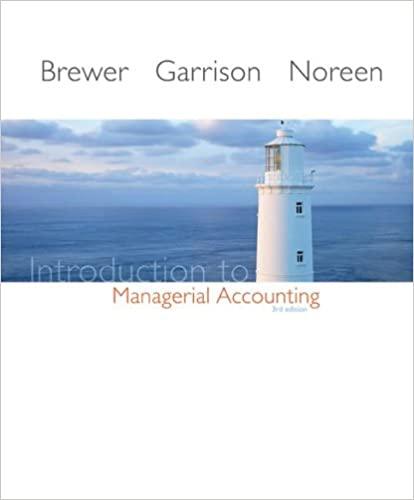Contrasting ABC and Conventional Product Costs (L02, L03, L04) Siege! Corporation manufactures a product that is available
Question:
Contrasting ABC and Conventional Product Costs (L02, L03, L04)
Siege! Corporation manufactures a product that is available in both a deluxe and a regular model. The compan>
has made the regular model tor years; the deluxe model was introduced several years ago to tap a new segment of the market. Since introduction o\~ the deluxe model, the company's profits have steadily declined. Sales of the deluxe model have been increasing rapidly.
Oxerhead is applied to products on the basis of direct labor-hours. At the beginning of the current year, management estimated that S2,000.000 in overhead costs would be incurred and the company would produce and sell 5.000 units of the deluxe model and 40.000 units of the regular model. The deluxe model requires 1.6 hours of direct labor time per unit, and the regular model requires 0.8 hours. Materials and labor costs per unit are given below:
Deluxe Direct materials cost per unit $1 50 Direct labor cost per unit $16 Regular
$112
$8 CHECK FIGURE
(3b) Regular: $152 per unit w
Required:
1
.
Compute the predetermined overhead rate using direct labor-hours as the basis for allocating overhead costs to products. Compute the unit product cost for one unit of each model.
2. An intern suggested that the company use activity-based costing to cost its products. A team was formed to investigate this idea. It came back with the recommendation that four activity cost pools be used. These cost pools and their associated activities are listed below:
Estimated Overhead Activity Cost Pool and Activity Measure Cost Purchase orders (number of orders) $ 84,000 Rework requests (number of requests) 216,000 Product testing (number of tests) 450,000 Machine-related (machine-hours) 1 ,250,000
$2,000,000 Activity Deluxe Regular Total 400 800 1,200 300 600 900 4,000 11,000 15,000 20,000 30,000 50,000 Compute the activity rate (i.e., predetermined overhead rate) for each of the activity cost pools.
3. Assume that actual activity is as expected for the year. Using activity-based costing, do the following:
a. Determine the total amount of overhead that would be applied to each model for the year.
b. Compute the unit product cost for one unit of each model.
4. Can you identify a possible explanation for the company's declining profits? If so, what is it?
Step by Step Answer:

Introduction To Managerial Accounting
ISBN: 9780073048833
3rd Edition
Authors: Peter Brewer, Ray Garrison, Eric Noreen





